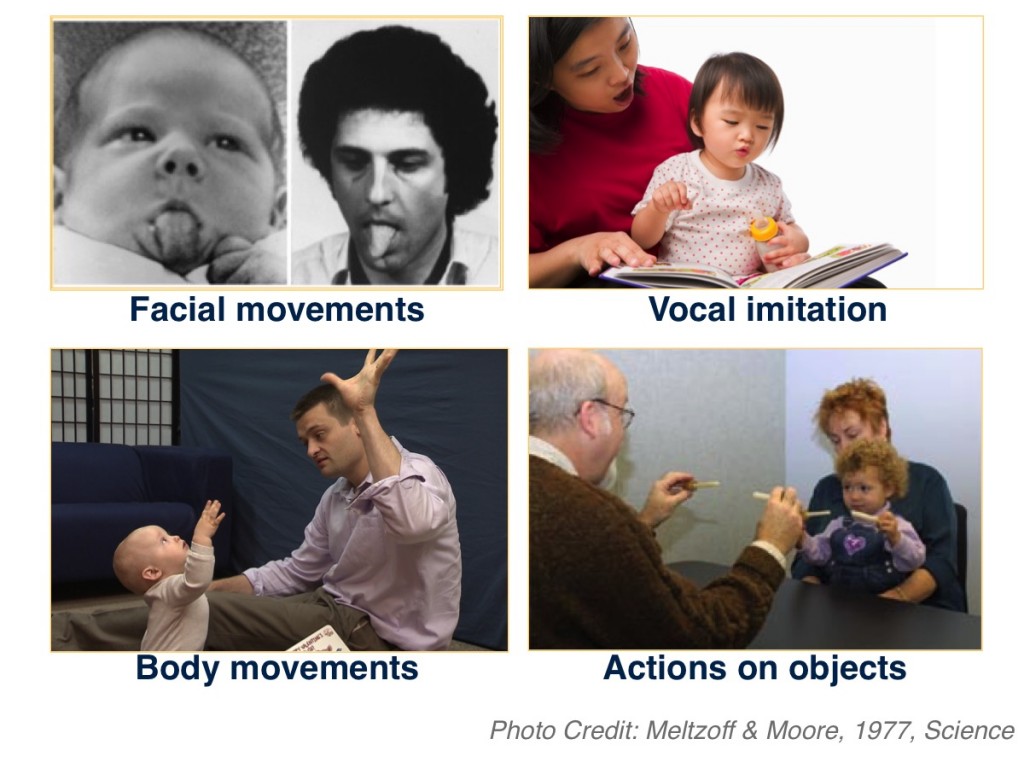
Before babies talk, they imitate facial movements, vocalizations, body movements, and actions on objects. The remainder of the module will focus on imitating actions on objects. This skill is essential for children’s learning about new objects and tools they encounter in their environment and culture.
To study when and what infants imitate, researchers first demonstrate a novel action. They usually perform the action several times in a row while an infant observes them. The infant is then given the opportunity to imitate the action on the same object. Infants’ imitation performance is compared to another group of infants. These infants are the same age but never saw the experimenter demonstrate the novel actions. This group is called the control group. A control group is included to determine whether children would have performed the action on the object even if they never saw the action demonstrated.
On the next page you’ll watch a short video clip of Dr. Andrew Meltzoff showing Alan Alda the power of imitation during early childhood. After you watch the video, take a moment to write down your observations. What do you notice about the children imitating in the video? What do you notice about the adults as they demonstrated the actions?
-
- Control group
- a group in a study who does not receive the treatment. The group serves as a comparison for the experimental group.
- Deferred imitation
- reproducing a behavior after a delay from its initial demonstration
- Electroencephalography (EEG)
- a method used to measure electrical activity in the brain
- Generalization
- the ability to apply something learned in one situation to a new situation
- Imitation
- observing then reproducing, or copying, a behavior
- Mirror neurons
- a type of brain cell. Mirror neurons respond when an animal produces an action and when they observe another animal produce the same action.
- Theory of mind
- the awareness that other people can have different thoughts and feelings from one’s own
- Trial-and-error learning
- trying different actions until you perform the right one